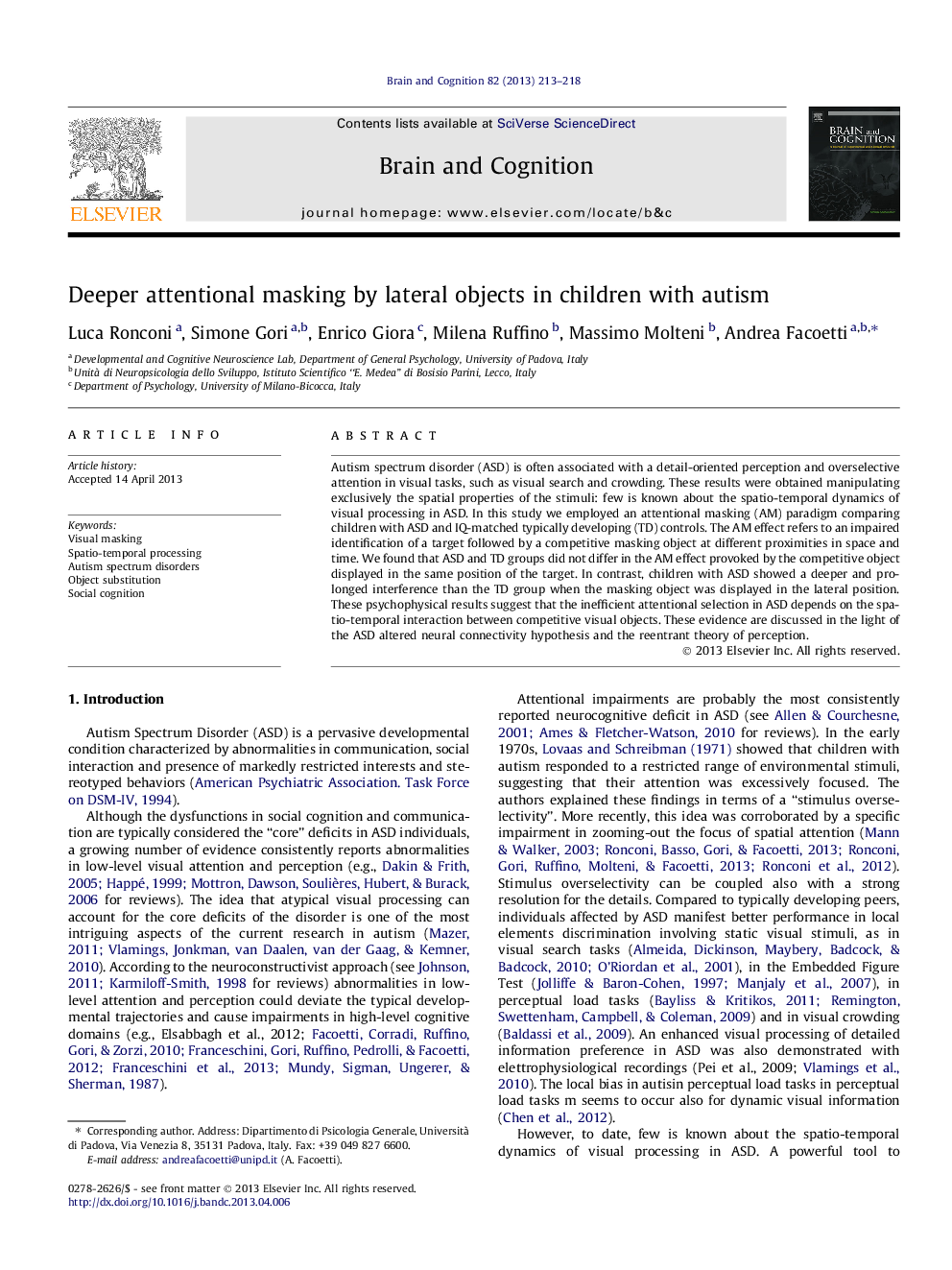| Article ID | Journal | Published Year | Pages | File Type |
|---|---|---|---|---|
| 924604 | Brain and Cognition | 2013 | 6 Pages |
•We investigated the spatio-temporal dynamic of visual processing in autism (ASD).•To do this we employed an attentional masking paradigm in ASD and controls.•The ASD group had no impairment when the mask appeared in the same target location.•The ASD group had stronger masking when the mask appeared in lateral position.•Results are discussed in the light of reentrant theory and atypical connectivity.
Autism spectrum disorder (ASD) is often associated with a detail-oriented perception and overselective attention in visual tasks, such as visual search and crowding. These results were obtained manipulating exclusively the spatial properties of the stimuli: few is known about the spatio-temporal dynamics of visual processing in ASD. In this study we employed an attentional masking (AM) paradigm comparing children with ASD and IQ-matched typically developing (TD) controls. The AM effect refers to an impaired identification of a target followed by a competitive masking object at different proximities in space and time. We found that ASD and TD groups did not differ in the AM effect provoked by the competitive object displayed in the same position of the target. In contrast, children with ASD showed a deeper and prolonged interference than the TD group when the masking object was displayed in the lateral position. These psychophysical results suggest that the inefficient attentional selection in ASD depends on the spatio-temporal interaction between competitive visual objects. These evidence are discussed in the light of the ASD altered neural connectivity hypothesis and the reentrant theory of perception.
